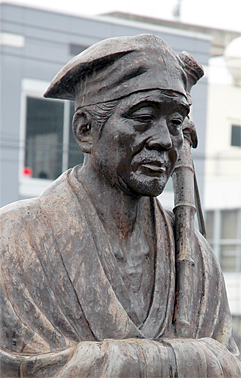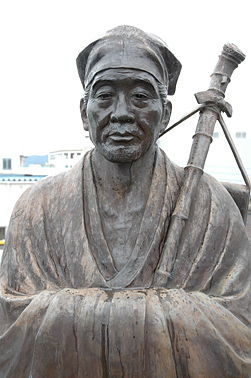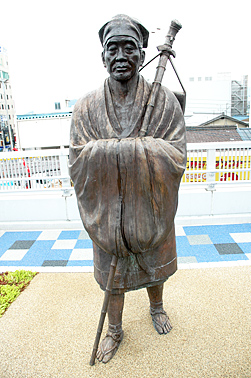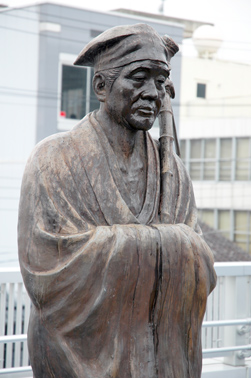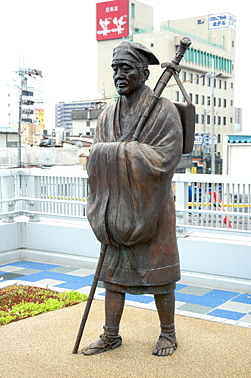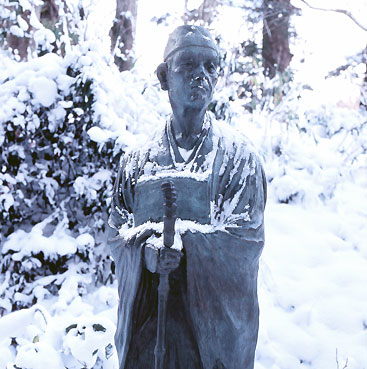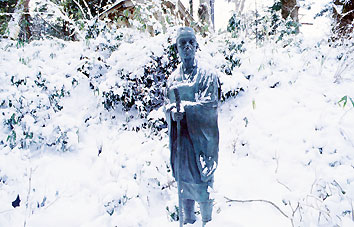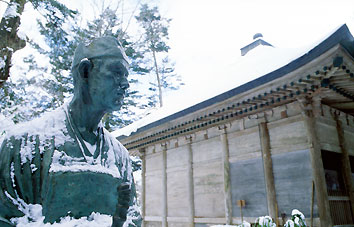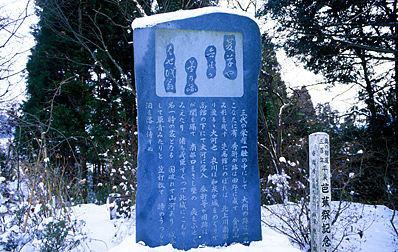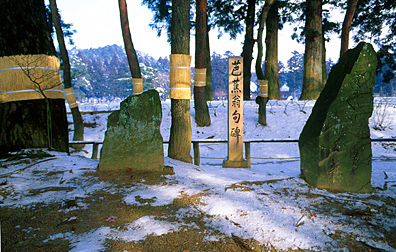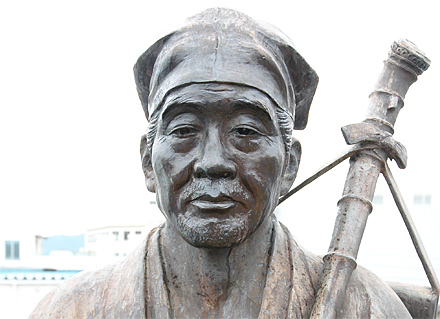 D 240 913a
D 240 913a
Matsuo Bashô, one of the
greatest literary figures of
Japan, brought haiku (= form
of poetry consisting of only 17 syllables in five-seven-five pattern)
from a mere pastime of townsmen up to the level of an art in which the
beauty and richness of the Japanese language are sought. He spent most
of his time traveling round the country. At the age of 45 he started
for a long journey round the north-eastern part of Honshû, where
he wrote Okuno-Hosomichi ("Narrow
Road to the Interior"), a
collection of his most famous haiku. In 1694 he passed away in Ôsaka.

